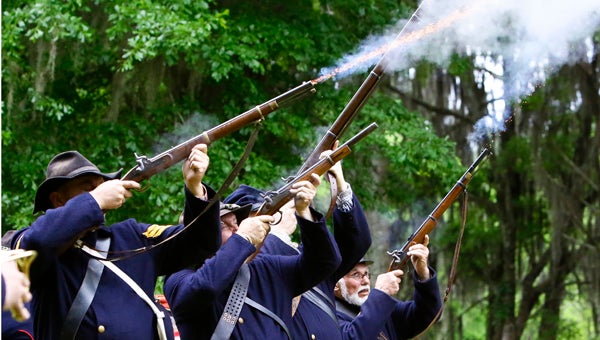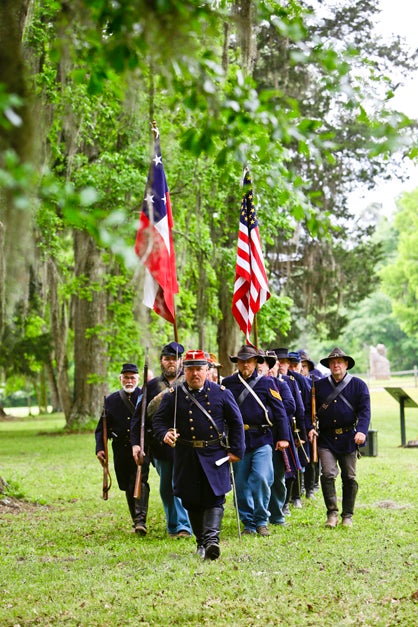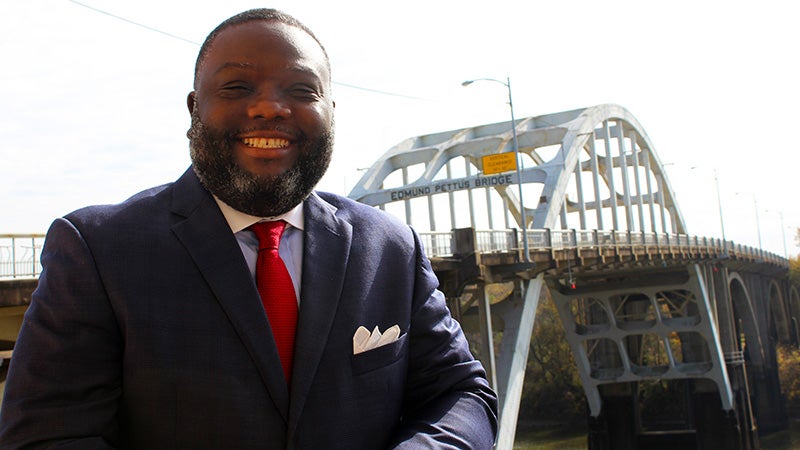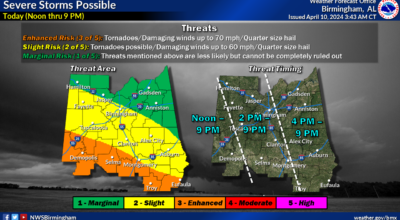Ceremony pays tribute to Union soldiers, POWs
Published 9:19 pm Thursday, April 23, 2015

solemn moment: Roger Farrell, Chuck Tarwater, Leonard Collins and Earl Stocks fire their muskets during a ceremony Thursday to honor fallen Union soldiers at Old Cahawba Archeological Park.
Civil War re-enactors paid tribute to fallen Union soldiers Thursday with a first-of-its-kind ceremony at Old Cahawba Archaeological Park.
Those dressed in not only Union but also Confederate uniforms gathered together to honor those that gave the ultimate sacrificed.
Today the ground the men and women stood upon was full of life. But in the 1860s, the same riverbank housed a war prison full of Union troops.
“[The prison] was a mere 125 feet east to west and 200 feet north to south, not very big at all. But in 1865, approximately 3,000 men were imprisoned here,” said Linda Derry, Old Cahawba site director. “It was probably the most crowded prison in the Civil War. According to the hospital and death records, less than 150 men died in this prison. It’s estimated as many as 8,000 to 9,000 men went through this prison with only 150 deaths.”

Civil War re-enactors march to a ceremony Thursday to honor Union soldiers at Old Cahawba Archeological Park.
Although after the war, many of the buried men were dug up and moved to other cemeteries, one body still remains — the unknown Union soldier.
To honor the soldier and the many others that died in the war, a red, white and blue wreath was placed upon his headstone.
A canon was fired three times before the ceremony began and four men fired their muskets in unison during to pay tribute to the soldiers.
“You have these men who went off to war, were captured, sent to prison and never returned. Families in those days generally never got notice of what happened to loved ones, they just know that they never came home from war,” said Benny Austin, vice president of the April 1865 Society. “What’s important about this is that this man that we have buried today, right here, this unknown federal soldier, represents all the men who died while in prison while at Old Cahawba. As individuals, we can do nothing to them personally, except remember their sacrifice, and that’s what we did today.”
John Kilpatrick, a re-enactor from Millbrook, has been participating in the Battle of Selma re-enactment for around 15 years. He said he was honored to be part of the ceremony.
“It’s not so much that we get out and play army, we remember why this happened,” Kilpatrick said. “Yes, they fought against one another, but when they came together they brought a stronger United States. “
Being involved with the ceremony and the re-enactment is something Kilpatrick enjoys, and he feels it’s a necessary to remember the men and women in the past and continue to move forward as a united country.
“We’re keeping this history alive that way we know what mistakes we did, so we don’t have to do it again,” Kilpatrick said. “The North was not all right, and the South was not all right, they just could not come to terms. But the beautiful thing is, when it was all over, we’ve got a United States all together.”




